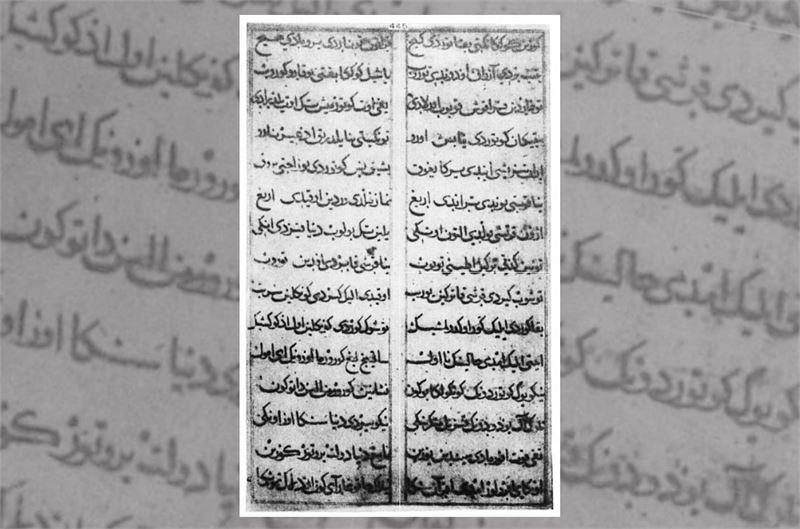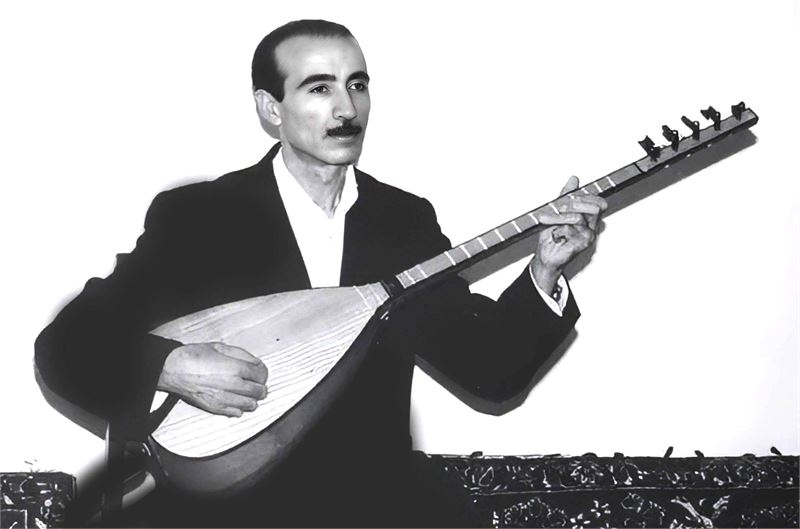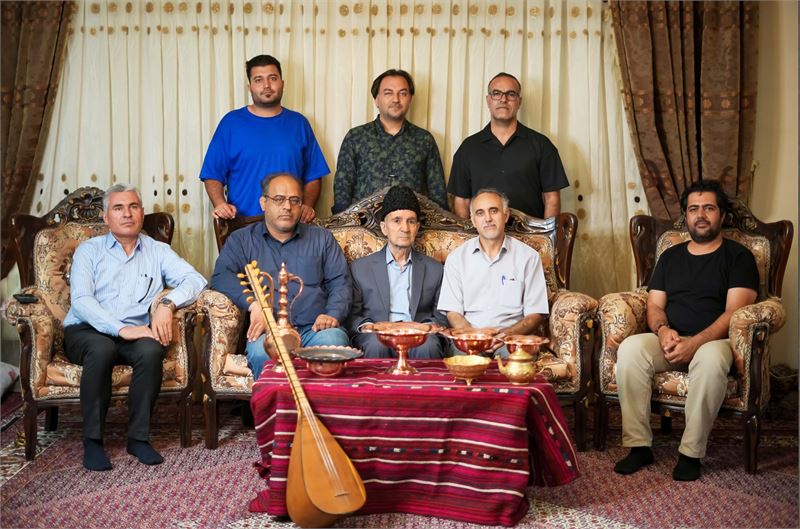Language and literature show a society's thoughts and culture. People use language and literature to share ideas and feelings. Literature softens emotions, develops taste and keeps ideas and values alive. Turkish literature is one of the richest in the world, with themes like love and beauty. Turkish literature includes myths, religion, love stories, philosophy and ethics. Iranian literature is in three main languages: Arabic, Persian and Turkish. This literature was created orally during the rule of the Umayyad Arabs and local rulers. Some texts from this era show how people used ancient poetry. Two examples are the children's song of Balkh and Basra. Arab poetry influenced the creation of new Iranian literature, which was mostly based on poetry. Sometimes it was written in native Arab forms and sometimes in Iranian forms. Turkish literature in Iran was created in Arabic from the time of the Prophet. Many great poets wrote in Arabic. These poets wrote in Arabic, even though it wasn't their mother tongue. Turkish literature began in the 3rd century Hijri with many works. It gave people great books like "Shan Qezi's story", which is about four old stories. Many famous poets like Emaduddin Nasimi and Molana Fuzuli wrote in Turkish. Their work was liked by poets in other countries.

An image of a page from "Qutadghu Bilik's book" (Science of Happiness) / Qutadghu Bilik's book is one of Turkey's masterpieces books. It was written in 1069 AD. This book is a story and a poem. Qutadghu Bilik's book was written by Yusuf Khas Hajeb, special minister and thinker of the Karakhanid government, in 6650 two-verse verses. The main theme of this book is to make people happy. In the book, the ruler, minister of justice, minister of reason, and minister of the end of life have a conversation. This book exists in three versions in the world. This picture is from the first version, written in Uyghur alphabet which is kept in the Royal Library of Vienna in Austria.
Persian is an important part of this literature. It first appeared in the fifth century AH with Qatran Tabrizi and Asadi Tosi. In the eighth century AH, many great poets such as Khaqani and Nizami Ganjavi wrote in Persian. Namdar is also important. Nizami Ganjavi is known for his lyrical stories. The most important military work is Khamsa or Panj Ganj, which is very important in the realm of lyrical stories. Turkish literature is based on two principles: realism and imagination. These combine to create stories and tales that reflect nature and people's lives. Turkish literature covers work, relationships, family, religion, customs and more. Meanwhile, poets and lovers have helped to keep this heritage alive.

Mr. Muslim Asgari was born in 1938 in Badamestan, Zanjan. He came to Zanjan in 1995 and studied religion for six years. Muslim Asgari has been an Ashiki artist since 1968. He learned music from his father. This talented artist gave Ashiq music in Iran – Zanjan a new form by combining his religious and classical education with wonderful performances and speech art. Master Ashiq Muslim Asgari has performed over 130 Ashiq stories in local communities. In 2007, Iran's Ministry of Culture honoured him as an Ashiki master. In 2024, the Qazal Ozan Association invited professors to honour him. Mr. Muslim Asgari has performed in many international events. In 2007, he went to the first International Lovers' Seminar in Turkey. This was held by UNESCO at Gazi University. He performed and introduced some of the music and stories of local Turkish-speaking communities. He has been active for over 56 years and has written two books of poems and stories. He is one of Iran's leading Ashighi artists.
The Turkish language and literature have changed a lot recently. This has made it harder to understand stories from the past. Many people speak Turkish and respect Turkish literature. Turkish languages have many dialects and types of literature. Some researchers think Turkish languages are local varieties or dialects of the same language. But most researchers agree that the modern Turkish languages are separate. The information shows that Turkish peoples and languages are widespread. Researchers should study the history and structure of Turkish language and literature.

The Qizel Ozan association in Zanjan, Iran, is a group of researchers, writers and poets. They run workshops and events on poetry, parables, legends and old stories. They also work to protect the Turkish language and literature as an intangible human heritage. In 2024, the Qizel Ozan Association held a ceremony to honour Muslim Asgari, a leading figure in Iranian Ashiq literature and art. / Qizel Ozan is the name of a water-rich and life-giving river that rises from the mountains of western Iran and flows into the Caspian (khazar) Sea after passing through Zanjan, and its meaning is red float.
---------------------
This article was contributed by Mr. Akbar Karimi, the international reporter for Arirang Culture Connect and the Founder and Managing Director of the Samte Ganjineye Ghoghnoos Cultural-Artistic Institute in Iran. His leadership in preserving and promoting Iranian intangible cultural heritage, along with his extensive experience in cultural-artistic research and his active participation in international forums such as UNESCO and ICCN, enriches his contributions to the global cultural dialogue.
Translated by Dr. roya jalili
Director of international relations of Samte Ganjineh Ghoghnoos Institute: Farnaz Seydi